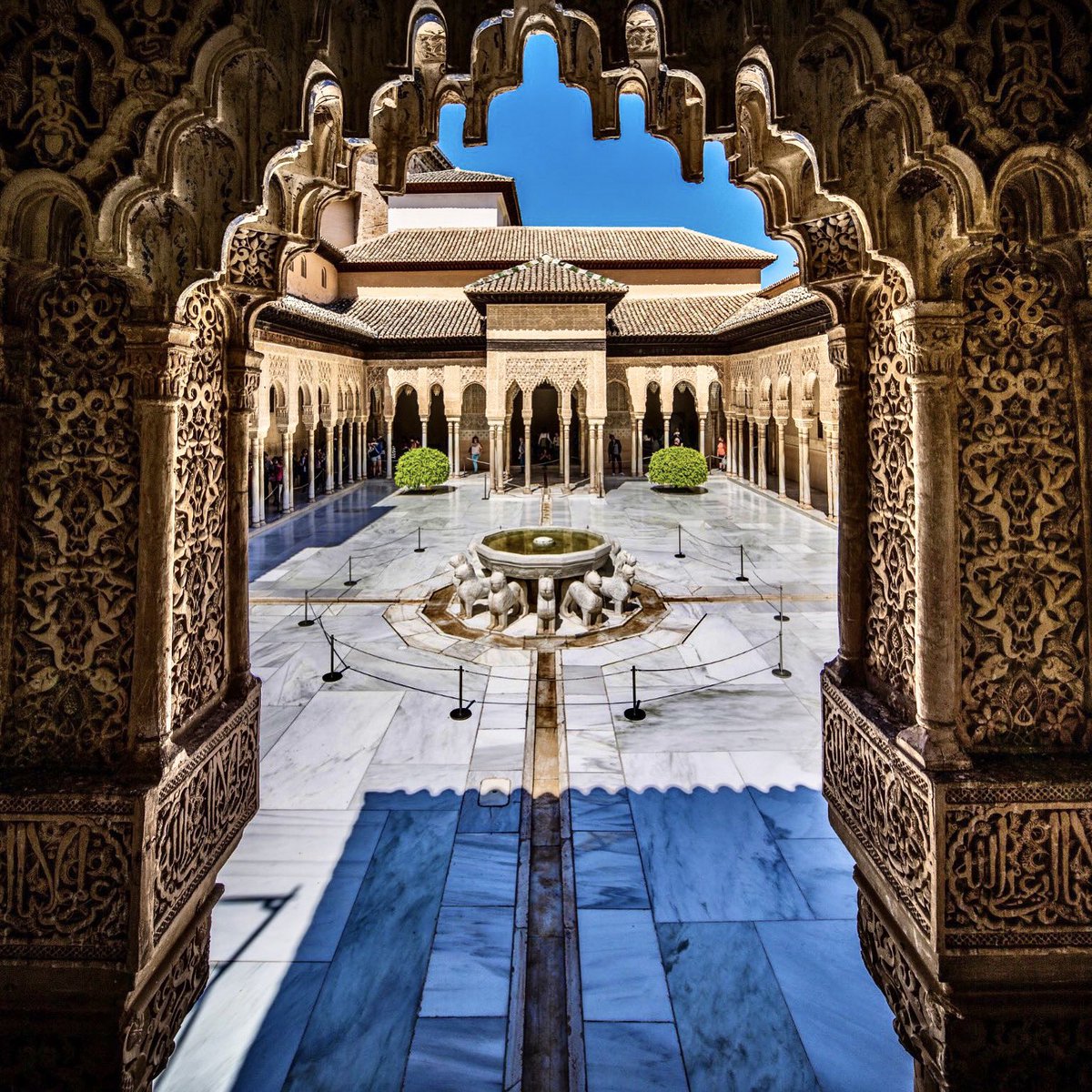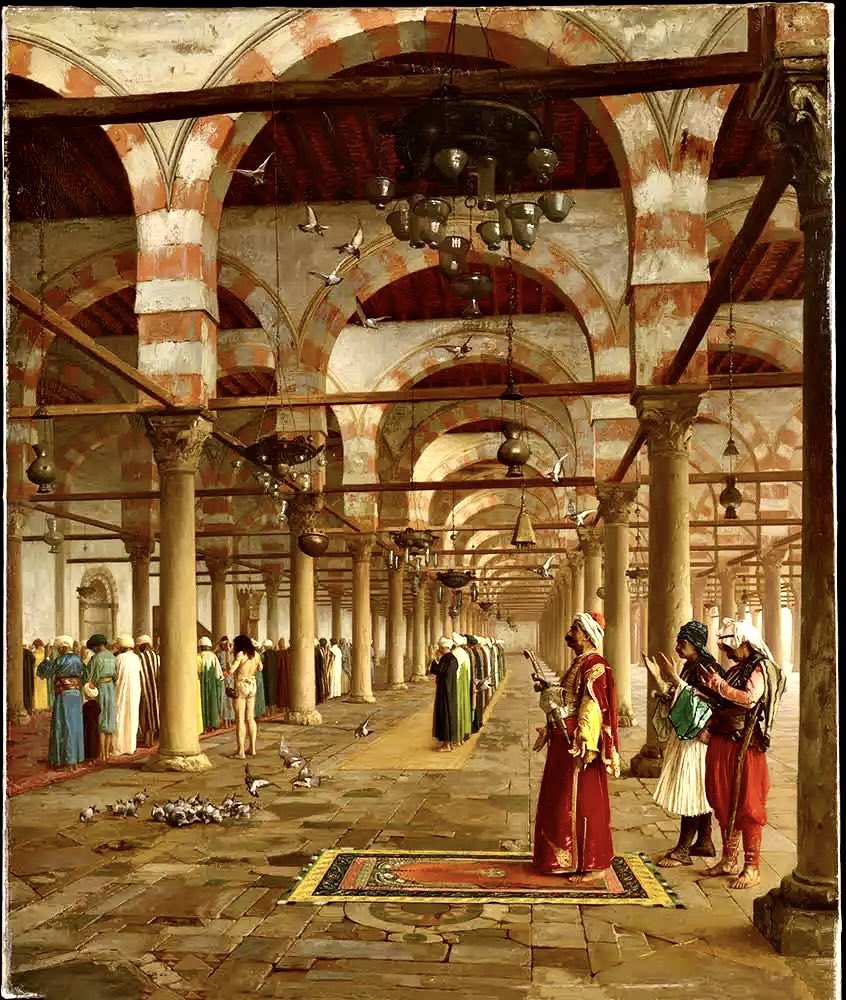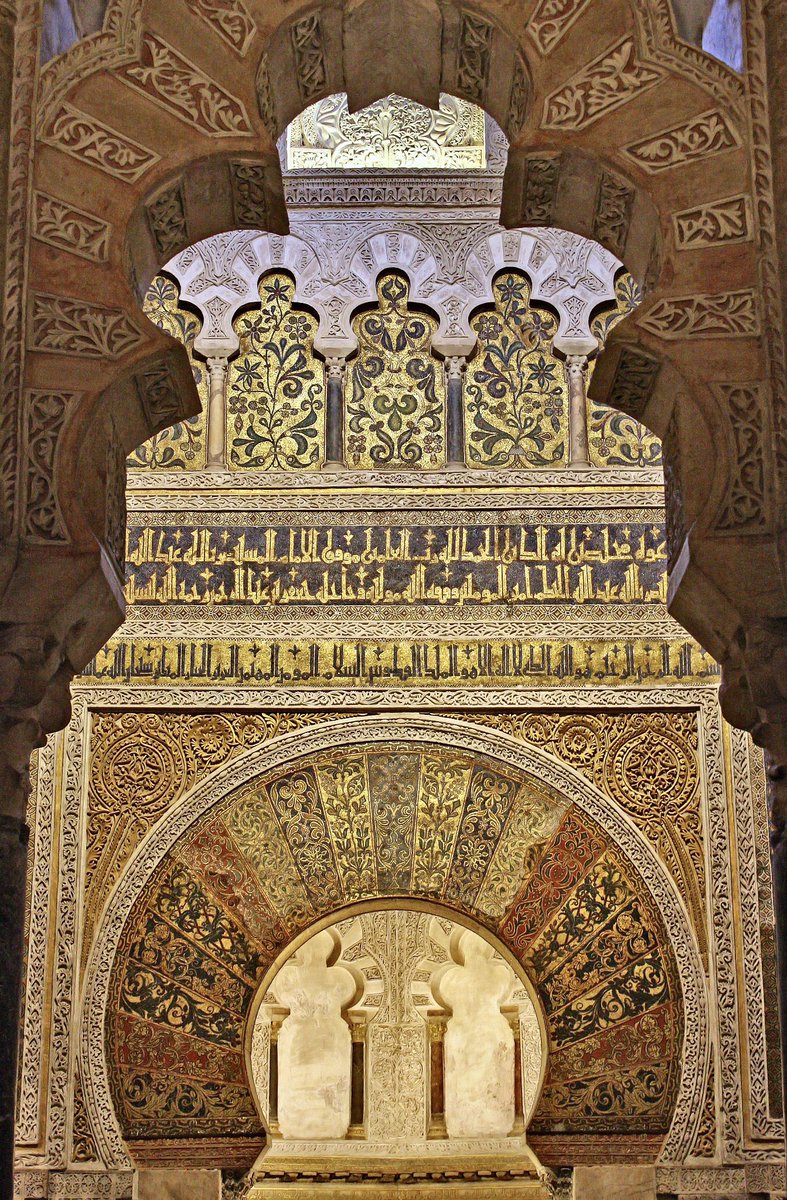Spain is renowned for its Islamic heritage. A legacy left after the Islamic Empire ruled & conquered the Iberian peninsula in 711. By 732, Al-Andalus was established, leaving behind one of Europe’s finest Islamic art collections
A thread on Islamic art & architecture in Spain…
A thread on Islamic art & architecture in Spain…

1/ In Spain, Islamic architecture is part of a larger movement that flourished in the Western Mediterranean area, leaving architectural marvels in modern Morocco, Tunisia, Libya, and Algeria. 

2/ Architecture and art are inextricably linked in Islamic culture. Islamic art showed the status of the caliph, and huge sums were spent on its production. This is evident in Andalusia. 

3/ Islamic art in Andalusia is described in several terms, each with a unique meaning. "Moorish art" is the most commonly used term. A less well-known term is Mudéjar, which describes the architecture created for Christian patrons by Muslim craftsmen 

4/ The Moors originally “Maurus” in Latin, was used to describe Berbers and inhabitants of North Africa. Later, it referred to Muslims of Spain until King Phillip III of Spain decreed their expulsion
Prayer in the Mosque by Jean-Leon Gerome, 1871, The Metropolitan Museum of Art
Prayer in the Mosque by Jean-Leon Gerome, 1871, The Metropolitan Museum of Art

5/ Moorish art is characterised by its intricate and complex geometry, floral motifs, and horseshoe arches as well as its use of shade and light as can be found in Alhambra, The Alcazar of Seville & The Giralda Tower among others
Dome ceiling at The Alcazar of Seville, Spain
Dome ceiling at The Alcazar of Seville, Spain

6/ There was always a fluid border between Muslim and Christian Spain. In a hybrid style known as Mudéjar, Islamic motifs passed through objects made for Christian patrons in an exchange of
styles
The bell tower of the church of San Salvador, Teruel, Aragon’s
styles
The bell tower of the church of San Salvador, Teruel, Aragon’s

7/ Mudéjar style, which emerged in the 12th century, resulted from the spiritual convergence of cultures and religions known for its intricate Islamic geometric patterns on tiles, bricks & ornamental metals. Spanish architecture continues to incorporate many of these elements 

8/ Many excellent mathematicians among the Muslims lived in Spain. For example, Abd al-Rahman I's architects built the first Umayyad Mosque at Cordoba based on Vitruvius' work & simple arithmetic. 

9/ The Book of Optics (1028) by In Haitam, later translated into Latin as De Aspectibus, revolutionized architecture in the 11th and 12th centuries. This resulted in the creation of Muqarnas, formed by fractionalizing the vault into small squinches and corbels 

10/ First documented in Spain in the mid-12th century, Muqarnas were probably used here as early as the mid-11th century. It is a type of ornamented vaulting found in Islamic architecture. 

11/ Honeycomb vaulting and stalactite vaulting originated from the squinch and hide the structural space that bears a dome. Typically, Muqarnas were used around the mihrab in mosques and places adjacent to the mosque's central halls. 

12/ In Spain, ornamental plaster, referred to as yeseria, was used to decorate upper walls.
The Madrasah of Granada, founded in 1349 by the Nasrid monarch Yusuf I, Sultan of Granada
The Madrasah of Granada, founded in 1349 by the Nasrid monarch Yusuf I, Sultan of Granada

13/ Generally, courtyards and interiors were decorated with tiles in geometric patterns and inscriptions. Many Islamic buildings from the late middle ages are covered with tiles. Tiles are still used in modern Spanish construction (azulejos). 

14/ The artesonado ceilings first appeared in Islamic Spain and Northern Africa in the 13th century. Several excellent examples of Artesonado ceilings can be found in the Alhambra and the
Aljafera in Zaragoza.
Aljafería in Zaragoza, Spain
Aljafera in Zaragoza.
Aljafería in Zaragoza, Spain

15/ One of the world's best collections of Islamic architecture can be found in Granada. In the 14th and 15th centuries, the Nasrids built the most magnificent palace in the city, the Alhambra, which had been controlled by the Zirids, Almoravids, Almohads, and Banu'l-Ahmar. 

16/ There is no better example of medieval Islamic architecture than the Alhambra Palace. Al-Hamra in Arabic means 'red one' because its walls were built from red clay. Over 250 years, the Nasrid rulers occupied the Palace city, consisting of a large building with several palaces 

17/ Cuarto Real de Santo Domingo
Granada's Dar al-Bayda was originally an Almohad palace, but it was rebuilt in Nasrid style around 1270. The Dominican Order took control of the city after the Catholic Kings conquered it
in 1492 (from which the city takes its name today)
Granada's Dar al-Bayda was originally an Almohad palace, but it was rebuilt in Nasrid style around 1270. The Dominican Order took control of the city after the Catholic Kings conquered it
in 1492 (from which the city takes its name today)

18/ The Mezquita-Cathedral
Early Islamic architecture is exemplified by this building. A total of 130 columns were erected during the mosque's construction by Abd ar-Rahman I in 784. As a result of population growth,
Abd ar-Rahman II expanded the mosque between 822 and 854
Early Islamic architecture is exemplified by this building. A total of 130 columns were erected during the mosque's construction by Abd ar-Rahman I in 784. As a result of population growth,
Abd ar-Rahman II expanded the mosque between 822 and 854

19/ The Alcazar
Built by Abd ar-Rahman IIl in the 10th c, it was extended by the Abbadids of Seville (1023-1091). As the Almohad rulers took control of Al-Andalus in 1198, many of the anterior palaces
were demolished & 12 palaces were built. Although The Patio del Yeso remains
Built by Abd ar-Rahman IIl in the 10th c, it was extended by the Abbadids of Seville (1023-1091). As the Almohad rulers took control of Al-Andalus in 1198, many of the anterior palaces
were demolished & 12 palaces were built. Although The Patio del Yeso remains

20/ Seville Cathedral
Built on the site of an Almohad mosque, the only remains of the original mosque include 2 portals - Portal del Perdon with horseshoe arches & a bronze-plated wooden door - a mugarnas
vault adjacent to the courtyard & minaret named La Giralda
Built on the site of an Almohad mosque, the only remains of the original mosque include 2 portals - Portal del Perdon with horseshoe arches & a bronze-plated wooden door - a mugarnas
vault adjacent to the courtyard & minaret named La Giralda

21/ The Golden Tower (la Torre de Oro)
This dodecagonal defense tower straddles the Guadalquivir river. In 1220-21, Abu 1 aula Idris built the tower. The stone and brick were probably covered with green or white tiles. The name
comes from the colour of the sandstone
This dodecagonal defense tower straddles the Guadalquivir river. In 1220-21, Abu 1 aula Idris built the tower. The stone and brick were probably covered with green or white tiles. The name
comes from the colour of the sandstone

22/ Medina Azahara
A 10th-century palace-city west of Cordoba. It was started by Abd al-Rahman Il & finished by his son al-Hakim II - although now in ruins. Named after Abdul Rahman's favorite wife, Zahra, it
was intended as a palatial residence & administrative center away.
A 10th-century palace-city west of Cordoba. It was started by Abd al-Rahman Il & finished by his son al-Hakim II - although now in ruins. Named after Abdul Rahman's favorite wife, Zahra, it
was intended as a palatial residence & administrative center away.

23/ The Aljafería in Zaragoza
The Banu Hu family ruled Zaragoza from 1039 until 1110 when the Almohads conquered the city. During this time, the city was the capital of the Taifa kingdom. The building has been extensively restored & is a significant testimony to the Taifas' era
The Banu Hu family ruled Zaragoza from 1039 until 1110 when the Almohads conquered the city. During this time, the city was the capital of the Taifa kingdom. The building has been extensively restored & is a significant testimony to the Taifas' era

24/ Even though the Muslim areas in Spain were later seized, the influence of Islamic architecture and art continues to live… 

• • •
Missing some Tweet in this thread? You can try to
force a refresh






















